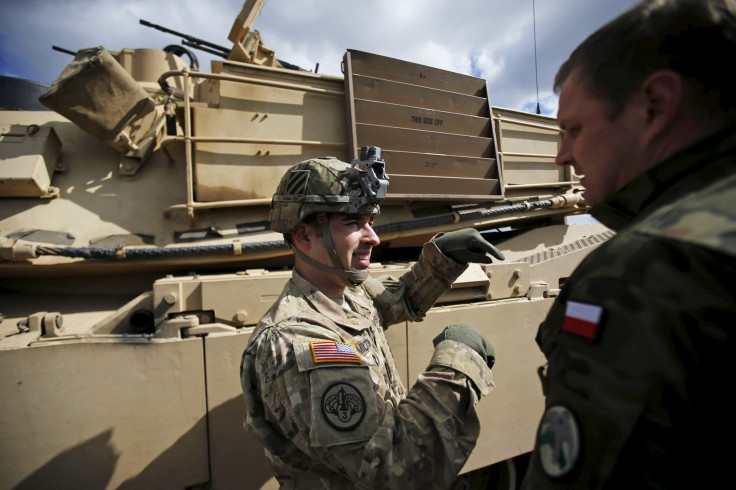Amid Russian Hostility, US Tanks Painted Woodland Green In Symbolic Shift After Years Of War In The Middle East

U.S. military tanks in Europe are once again being painted woodland green, as the threat from Russia along the Eastern frontier in Europe continues. The painting of the once tan-colored tanks marks a symbolic and strategic shift in military posture after more than a decade of fighting in Iraq and Afghanistan, Stars and Stripes reported Tuesday.
During a walk-through of the Army’s Coleman Barracks in Mannheim, Germany, Lt. Gen. Ben Hodges, commander of the U.S. Army Europe, said the painting of the tanks was more about unity inside the NATO alliance and preparation than a symbolic gesture.
“It is about deterrence and reassurance, and paint -- all of a sudden, that matters,” Hodges said while touring the U.S. barracks where hundreds of Bradley fighting vehicles, tanks and other heavy weapons are being stored.
The United States and its NATO allies have expanded their military presence across eastern Europe, the Baltics and the Balkans, effectively creating a line of defense on Europe's border with Russia. The buildup has gradually intensified since Russia annexed Crimea in March 2014 and continued to be involved in the east Ukraine war that began in April 2014.
The U.S. army was just three days from handing over Coleman Barracks to the German military when Russia began its intervention in Crimea. Now the army will remain at the base on a temporary basis until the current standoff with Moscow ends.
One of the major talking points during the walk-through of the base by Hodges was the logistics of quickly transporting tanks, heavy weapons and troops to the front line. Maj. Gen. Duane A. Gamble, commander of the 21st Theater Sustainment Command, said soldiers will have to practice old-style ways of transporting equipment that were not practiced during the wars in the Middle East.
“We need to rebuild competency on several levels,” Gamble said.
© Copyright IBTimes 2024. All rights reserved.












